| C H A P T E R 4 |
|
Connecting Your SCSI Array |
This chapter provides procedures for connecting the array to power and to network devices and for cabling the Sun StorEdge 3320 SCSI RAID array for single-bus or split-bus configurations.
For details on cabling the Sun StorEdge 3320 SCSI JBOD array, see Appendix B.
The topics covered in this chapter are as follows:
Before you connect the Sun StorEdge 3320 SCSI array to the network, position the Sun StorEdge 3320 SCSI array in the rack or in the location where it will remain.

|
Caution - When you power off the array, wait five seconds before you power it back on. If you power the array off and on too quickly, a race condition might occur. |
The bezel on your array has two locks whose keys can be removed when the locks are in either the locked or open position. It is possible to reconfigure the locks so that the keys cannot be removed.

FIGURE 4-1 Front Bezel and Front Bezel Locks of an Array
Figure showing front bezel and front bezel locks of an array.To change the locks so the keys cannot be removed, follow these steps:
1. Remove the bezel by gently pivoting the swing arms out of their ear sockets.
See Section 6.7.1, Removing the Front Bezel and Ear Caps for step-by-step instructions on how to remove the bezel.
2. Make sure the key is in the locked position, with the pawl extending horizontally past the edge of the bezel.
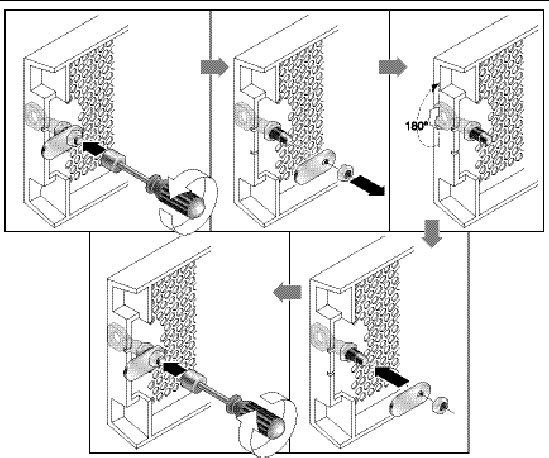
FIGURE 4-2 Sequence of Steps to Change Front Bezel Locks So Keys Cannot Be Removed
3. Hold the key in place and use a 12-mm or 3/8-inch nut driver to remove the locking nut that holds the pawl in place, as shown in the first panel of FIGURE 4-2.

|
Caution - Be sure to hold the key in place. Otherwise there is a risk of breaking the small tab on the lock that serves as a stop. |
4. Lift the pawl off the threaded part of the lock body, as shown in the second panel of FIGURE 4-2.
5. Set the pawl aside, face up, so that you can remember its orientation when you replace it.
6. Use the key to turn the lock 180 degrees, as shown in the third panel of FIGURE 4-2.
7. Replace the pawl in the same orientation as before, as shown in the fourth panel of FIGURE 4-2.
8. Hold the key in place and use the nut driver to refasten the locking nut that holds the pawl in place, as shown in the fifth panel of FIGURE 4-2. Be careful not to cross-thread the nut.
| Note - To convert your bezel locks back so that the keys can be removed, repeat this procedure. |
FIGURE 4-3 identifies a typical series of hardware connections used when you install an array. These procedures are designed for a redundant Sun StorEdge 3320 SCSI configuration.
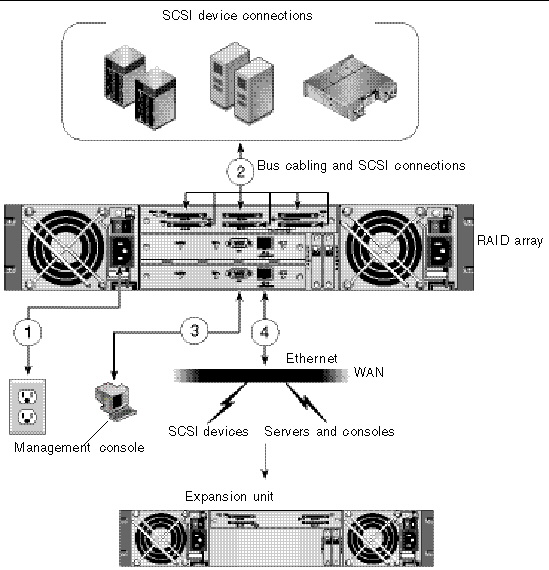
FIGURE 4-3 Typical Sequence of Installation Steps for the Sun StorEdge 3320 SCSI Array
When you connect the AC power cords, you should install the provided two cord locks at the same time. The provided AC cord locks are used to securely fasten the AC cable connectors.

|
Caution - For AC power: If the array is connected to AC power sources not within the designated 90-135, 180-265 VAC PFC range, damage might occur to the unit. |
| Note - To ensure power redundancy, be sure to connect the two power supply modules to two separate circuits (for example, one commercial circuit and one UPS). |
To connect the AC power cords, perform the following procedure:
1. Obtain an appropriate AC power cable.

|
Caution - The power cables for Sun StorEdge 3320 SCSI products are designed only for Sun StorEdge 3320 SCSI products and should not be used with other equipment. |
2. Use a screwdriver to remove the screw and cylindrical standoff from one of the two cord locks provided and set them aside for reassembly later.

3. Slide the cord lock over the AC power connector.
4. Hold the cylindrical standoff between the two screw-holes on the flanges of the cord lock.
5. Insert the screw into the first screw-hole, through the standoff, and then into the threaded screw-hole on the other flange.
6. Tighten the screw with a screwdriver until the flanges bottom out on the cylindrical standoff.
7. Push the power cord into the power supply receptacle until it is firmly seated.
8. Push the green ejector handle forward until it is seated against the power supply.
9. Turn the thumbscrew of the green ejector handle clockwise until it is finger-tight to secure the handle and the cord lock.
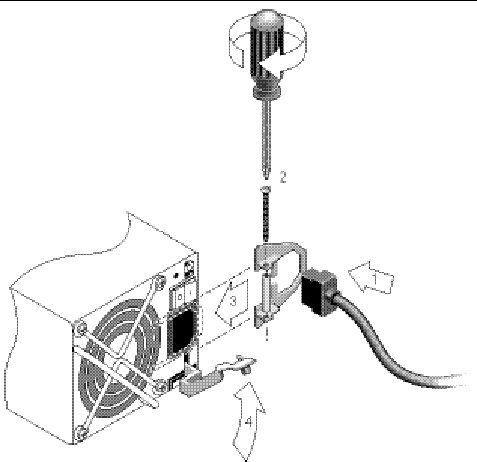
FIGURE 4-5 Inserting the Cord Lock
10. Repeat this procedure for the second cord lock and second power cable.
Two DC power cords are packaged with each DC array. To connect the DC power cords, perform the following procedure:
1. Connect a DC power cable to the first power supply and to a power outlet.
2. Check the DC cable part number and wire labels carefully before connecting the cable to the source.

|
Caution - If the array is connected to DC power sources not within the designated -48V DC (-36 VDC to -72 VDC) range, damage might occur to the unit. |
| Note - To ensure power redundancy, be sure to connect the two power supply modules to two separate circuits (for example, one commercial circuit and one UPS). |
| Note - To extend the length of the DC power cable as needed, strip the last 1/4 inch of the cable, insert the stripped end into a provided Panduit tube, and crimp the tube. |
3. Tighten the cable locking screws to attach the cable securely to the power supply power outlet.
4. Connect the second power cable to the second power supply and to a second power outlet. Tighten the cable locking screws.
If one power supply fails, the second power supply automatically takes the full load.
Perform the initial check of the array according to the following procedure:
1. Connect two AC (or DC) power cables to the power and fan modules on the back of the array.

|
Caution - The power cables for Sun StorEdge 3320 SCSI products are designed only for Sun StorEdge 3320 SCSI products and should not be used with other equipment. |
2. Power on the array by turning on each power switch.
See Section 4.14, Power-On Sequence for the power-up sequence to use when operating RAID arrays and expansion units. See Appendix B for the power-up sequence to use when operating standalone Sun StorEdge 3320 SCSI JBODs directly attached to hosts.
3. Check for the following LED activity:
All front-panel LEDs turn solid green to indicate good operation.
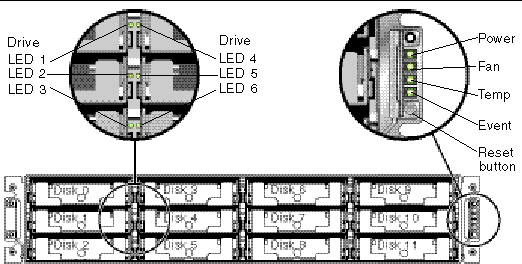
FIGURE 4-6 Front Panel of the Sun StorEdge 3320 SCSI Array With LEDs Displayed
See Chapter 5 for more information about the array’s LEDs.
The drive-bus configuration determines how drives and drive IDs are assigned to drive channels on the controller.
A single-bus configuration assigns all disk drive IDs in a controller to one channel (typically CH 0 for the RAID array and CH 2 for an expansion unit).
A split-bus configuration assigns half the disk drive IDs to CH 0 and the other half to CH 2 in the RAID array, and then typically adds more disk drive IDs to both CH 0 and CH 2 when it is connected to an expansion unit.
Each drive channel can have up to 16 IDs (0 to 15); ID 6 and ID 7 are reserved for internal connections.
On the back panel of each RAID array on the I/O module, the SB icon is displayed next to the CH 0 port and the SCSI SNGL BUS CONF port to indicate where to connect the SCSI jumper cable for a single-bus configuration.
Similarly, the DB icon is displayed next to the CH 2 port and the split-bus CONF port to indicate where to connect the SCSI jumper cable for a split-bus configuration.

FIGURE 4-7 Single-Bus and Split-Bus Icons
On the back panel of each expansion unit, the SB icon indicates where to connect the jumper cable for a single-bus configuration.
The physical drive IDs are also displayed on the lower inside-front edge of the chassis. These IDs are automatically assigned and appear in the RAID controller status tables.

FIGURE 4-8 Disk Drive IDs Displayed Inside the Lower Edge of the Chassis
Sun StorEdge 3320 SCSI arrays are preconfigured with the default channel settings shown in FIGURE 4-9. The most common reason to change a host channel to a drive channel is to attach expansion units to a RAID array.
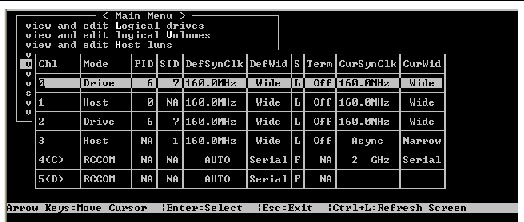
FIGURE 4-9 Sun StorEdge 3320 SCSI Array Default Channel Settings
After you cable the array, modify the host or drive channels as needed using the firmware application. For information about how to change channel settings, refer to the Sun StorEdge 3000 Family RAID Firmware User’s Guide.
| Note - When adding a host channel ID, ID6 and ID7 are reserved for host HBAs. |
A single-bus I/O configuration assigns all disk drive IDs in a chassis (RAID or expansion unit) to one channel. This configuration is convenient administratively if you want to assign all RAID array drive IDs to channel 0, and assign all expansion unit drive IDs to channel 2.
1. To configure a RAID array as a single-bus configuration, connect the SCSI jumper cable between the SCSI ports labeled “CH 0” and “SNGL BUS CONF” as shown in FIGURE 4-10. Tighten the cable jack screws with six full clockwise turns to ensure proper connection and operation.

FIGURE 4-10 Single-Bus Connection: All Drives are Assigned to a Single Channel (CH 0)
2. To configure an expansion unit as a single-bus configuration, connect the SCSI jumper cable between SCSI ports (lower left and upper right ports), as shown in FIGURE 4-11. Tighten the cable jack screws with six full clockwise turns to ensure proper connection and operation.

FIGURE 4-11 Required Jumper Cabling for a Single-Bus Expansion Unit

|
Caution - A maximum of 16 drive IDs is allowed per channel. Therefore, with a 12-drive array, do not connect a split-bus channel 0 or channel 2 (6 IDs) to a single-bus expansion unit (12 IDs). |
3. (Optional) Use a SCSI cable to connect a RAID array (channel 2 port) to an expansion unit (lower right port). Tighten the cable jack screws with six full clockwise turns to ensure proper connection and operation.
The configuration in FIGURE 4-12 shows a RAID array with all its drive IDs assigned to channel 0, and an expansion unit with all its drive IDs assigned to channel 2.
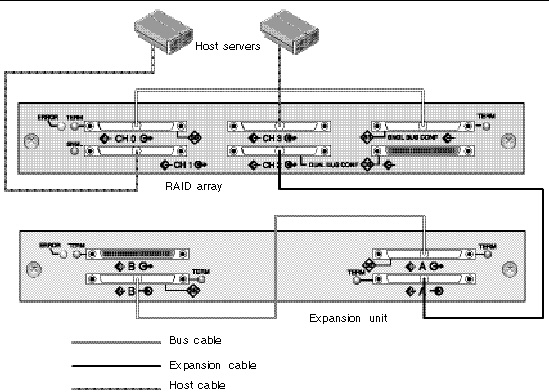
FIGURE 4-12 Required Single-Bus Expansion Unit Configuration When Connected to a RAID Array
Based on the configuration in FIGURE 4-12, the default drive IDs for a 12-drive single-bus configuration are shown in FIGURE 4-13 and FIGURE 4-14. (ID6 and ID7 are reserved for host HBAs and should not be used as host channel IDs.)
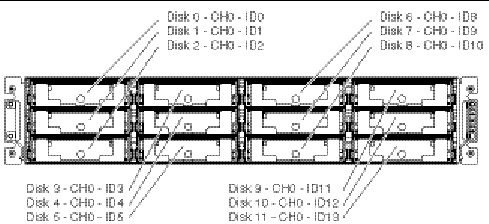
FIGURE 4-13 RAID Array: Single-Bus Configuration, Default IDs
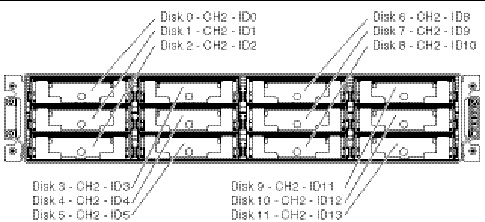
FIGURE 4-14 Expansion Unit: Single-Bus Configuration, Default IDs
The IDs are also displayed on the lower inside-front edge of the chassis. These IDs are automatically assigned and appear in RAID controller status tables.
4. Connect your RAID array (SCSI channel 1 and 3 ports) to one or two host servers with SCSI cables.
SCSI ports for channels 1 and 3 are assigned as host channels by default.
A split-bus configuration assigns half the disk drives to one channel and the other to the second channel. This configuration can be helpful when you want to use one set of drives to mirror the second set with drives configured as RAID 1 drives.
1. To create a split-bus configuration on a RAID array, use the SCSI jumper cable to connect the CH 2 port to the split-bus (formerly known as the dual-bus) CONF port. Tighten the cable jack screws with six full clockwise turns to ensure proper connection and operation.
Six IDs are assigned to CH 0, and six IDs are assigned to CH 2 in a 12-drive array.

FIGURE 4-15 RAID Split-Bus Configuration
In the split-bus expansion unit configuration, no jumper cable is required.

FIGURE 4-16 Expansion Unit Split-Bus Configuration
2. (Optional) Use a SCSI cable to connect a RAID array channel 2 port (upper-right CONF port) to an expansion unit lower input port. Tighten the cable jack screws with six full clockwise turns to ensure proper connection and operation.
In FIGURE 4-17, RAID channels 0 and 2 are expanded into the expansion unit, in a split-bus configuration set up on the RAID array and kept by default for the expansion unit.

FIGURE 4-17 Split-Bus Configuration With One RAID Array and One Expansion Unit

|
Caution - A maximum of 16 drive IDs is allowed per channel. Therefore, with a 12-drive array, do not connect a split-bus channel 0 or channel 2 (6 IDs) to a single-bus expansion unit (12 IDs). |
The split-bus configuration shown in the preceding figure assigns half the IDs from the RAID and the expansion unit to channel 0, and the other half to channel 2. The “SINGLE-BUS CONF” port is a channel 2 expansion port in a split-bus configuration.
3. Based on the configuration shown in FIGURE 4-17, the default drive IDs for a split-bus configuration are shown in the following figures.
ID6 and ID7 are reserved and are not available for drive IDs.
The IDs are also displayed on the lower inside edge of the chassis. These IDs are automatically assigned and appear in RAID controller status tables.
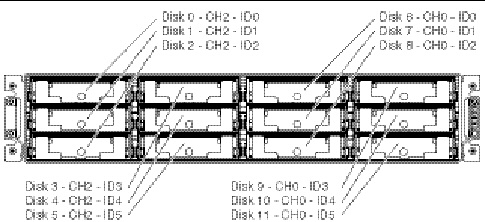
FIGURE 4-18 RAID Array: Split-Bus Configuration, Default IDs
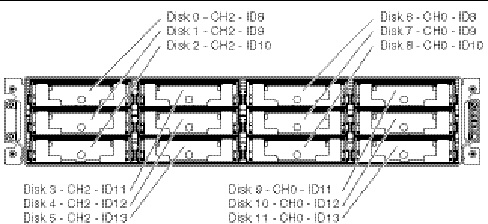
FIGURE 4-19 Expansion Unit: Split-Bus Configuration, Default IDs
4. Connect your RAID array (SCSI channel 1 and 3 ports) to two host servers with SCSI cables.
SCSI ports for channels 1 and 3 are assigned as host channels by default.
The following figures illustrate the standard cabling scenarios for a 12-drive array:
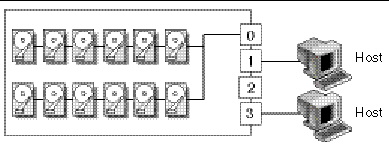
FIGURE 4-20 Configuration #1: Single-Bus Configuration With Two Hosts
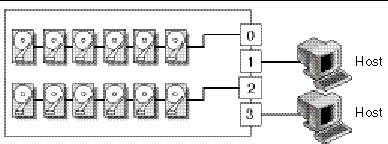
FIGURE 4-21 Configuration #2: Split-Bus Configuration With Two Hosts
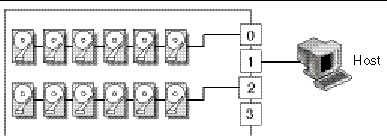
FIGURE 4-22 Configuration #3: Split-Bus Configuration With One Host

|
Caution - A maximum of 16 drive IDs is allowed per channel. Therefore, do notconnect a split-bus channel 0 or channel 2 (6 IDs) to a single-bus expansion unit (12 IDs). |
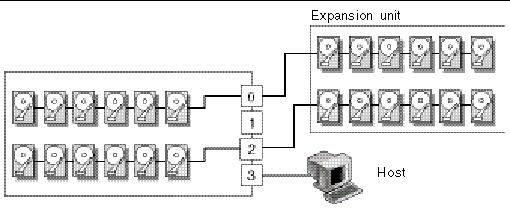
FIGURE 4-23 Configuration #4: Split-Bus Configuration With One Split-Bus Expansion Unit
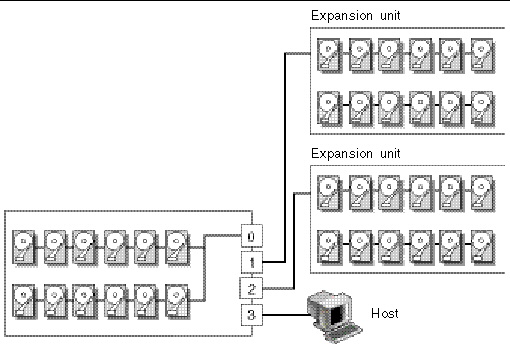
FIGURE 4-24 Configuration #5: Single-Bus Configuration With Two Single-Bus Expansion Units
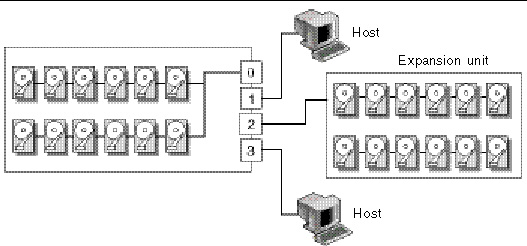
FIGURE 4-25 Configuration #6: Single-Bus RAID Connected to One Single-Bus Expansion Unit
By default, channels 1 and 3 (the upper middle SCSI port and lower left SCSI port on the I/O module) are host channels. The array can be connected to a host in one of the following ways:
Connect the array to one or two hosts with SCSI cables. Refer to the Sun StorEdge 3320 SCSI Array Release Notes for a list of the supported cables.
The SCSI specification states that the maximum bus length for Ultra3 SCSI is 25 meters (82 feet) for point-to-point connections. The Sun StorEdge 3320 SCSI RAID array uses a point-to-point implementation. Each channel connector is on a separate physical SCSI bus.
Taking into account the internal bus length of .5 meters (1.64 feet) and the internal SCSI bus length of the host, the maximum SCSI cable length to each channel connector could conceivably be around 24 meters (72.8 feet) when connected to an Ultra3 host adapter. However, the longest Ultra3 cable qualified by Sun_is 10 meters (32.8 feet) in length.
When connected to single-ended host adapters, the longest support bus length per connector is 1.5 meters (4.9 feet).
| Note - When connecting to Ultra3 host adapters, all SCSI cables must be Ultra3-qualified. |
| Note - If you connect two hosts to the same channel on a RAID array, you do not need to change the scsi-initiator-id of one host adapter. |
Designed for a fully redundant configuration, a standard RAID array has channels 0 and 2 assigned as drive channels, and channels 1 and 3 assigned as host channels.
You can attach up to two expansion units to a RAID array if channel 1 or channel 3 is configured as a drive channel. When you configure a host channel as a drive channel, the primary ID (PID) is set to 8 and the secondary ID (SID) is set to 9. To avoid SCSI ID conflicts, change the newly assigned drive channel PID to 6 and the SID to 7 using the firmware application. For details, refer to the Sun StorEdge 3000 Family RAID Firmware User’s Guide.
The following figures are examples of configurations that have a RAID array connected to one expansion unit.

|
Caution - A maximum of 16 drive IDs is allowed per channel. Therefore, in a 12-drive array, do not connect a split-bus channel 0 or channel 2 (6 IDs) to a single-bus expansion unit (12 IDs). |
In FIGURE 4-26, the RAID array and one expansion unit have been set up for single-bus configuration; Channel 2, a drive channel, is connected to the expansion unit.

FIGURE 4-26 Single-Bus Configuration With One Host and One Expansion Unit
In FIGURE 4-27, the RAID array and one expansion unit have been set up for a split-bus configuration; Channel 0, a drive channel, is connected to the expansion unit and Channel 2, a drive channel, is connected to the RAID unit.

FIGURE 4-27 Split-Bus Configuration With One Host and One Expansion Unit
The following figures are examples of configurations that have a RAID array connected to two expansion units.

|
Caution - A maximum of 16 drive IDs is allowed per channel. Therefore, in a 12-drive array, do not connect a split-bus channel 0 or channel 2 (6 IDs) to a single-bus expansion unit (12 IDs). |
In FIGURE 4-28, the RAID array and the two expansion units have been set up for single-bus configuration; Channel 3 has been reassigned as a drive channel and connected to the second expansion unit.
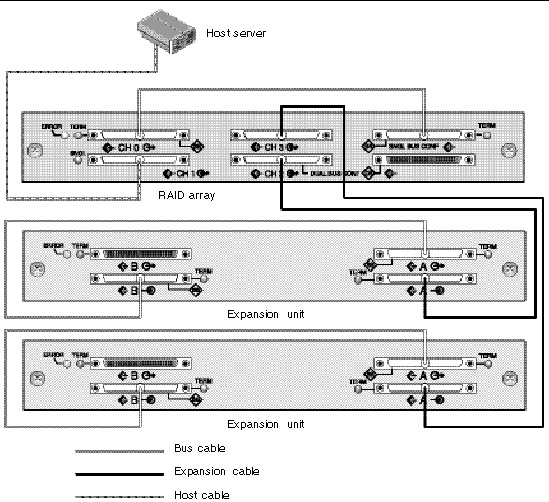
FIGURE 4-28 Single-Bus Configuration With One Host and Two Expansion Units
In FIGURE 4-29, the RAID array and one expansion unit #1 have been configured for split-bus configuration and expansion unit #2 is set for single-bus configuration; Channel 3 has been reassigned as a drive channel and connected to the second expansion unit. The RAID channels 0 and 2 are connected and expanded into the split-bus expansion unit #1, and RAID channel 3 is connected and expanded into a single-bus expansion unit #2.

FIGURE 4-29 Split-Bus/Single-Bus Configuration With One Host and Two Expansion Units
To install an expansion unit to an existing, configured RAID array, perform the following steps:
1. Stop I/O and shutdown the controller to ensure that all data in the cache is written to disk.
For details on shutting down, see Section 4.15, Power-Off Procedure.
2. Physically cable the new expansion unit to the array using a valid cabling configuration.
See Section 4.10.1, Cabling to One Expansion Unit and Section 4.10.2, Cabling to Two Expansion Units for more information on expansion unit cabling configurations.
3. Power on the expansion units.
For details on the power on sequence, see Section 4.14, Power-On Sequence.
Before you can configure an array, you must establish one or more communication links between at least one host and an array. You can use any combination of the array’s RS-232 COM (serial) port, the Ethernet port, and the in-band data connection between the host and the array.
See Section 4.11.2, Configuring the RS-232 Serial Port Connection for more information. For pinout information, see Appendix C.
When you connect via the serial port, you immediately access the controller firmware application, a management program embedded in the firmware.
You can use this IP address to monitor and manage the array’s firmware through telnet sessions. See Section 4.12, Setting Up Out-of-Band Management Over Ethernet for information about setting up a telnet session. The out-of-band management tools are:
| Note - By default, the CLI and the Sun StorEdge Configuration console automatically access in-band all arrays connected to the host server where the software is installed. |
See Section 4.11.3, Manually Setting a Static IP Address for information.
When the array is first powered up, the default IP address setting uses the IP address assigned by a DHCP server.
| Note - If you do not use a DHCP server with the array, you will not have an IP address and will need to use the serial port connection to create an IP address. See Section 4.11.2, Configuring the RS-232 Serial Port Connection. |
If the RAID array is connected to a network with an active DHCP server, you can determine the IP address assigned to the array in several ways:
When you connect via the serial port, you immediately access the controller firmware application, a management program embedded in the firmware.
If the RAID controller is not on a network connected to an active DHCP server, an IP address of 0.0.0.0 is displayed. Refer to the Sun StorEdge 3000 Family CLI User’s Guide for more information.
Event messages sent as SNMP traps to the email address you specify also contain the IP address of the array from which they are sent. Refer to the “Configuration Parameters” chapter in the Sun StorEdge 3000 Family RAID Firmware User’s Guide for more information.
Once you have determined the RAID controller’s IP address using one of these methods, you can establish a telnet session to that IP address.
If you do not have an active DHCP server on the same network as the RAID array, or if you prefer to have a static IP address, use the procedures in Section 4.11.3, Manually Setting a Static IP Address.
The RS-232 COM (serial) port on either controller module can be used to configure and monitor the RAID array using the controller firmware. It can be connected to a VT100 terminal, terminal emulation program, terminal server, or the serial port of a server.
| Note - When you connect through a serial port connection, you might need to refresh the screen to display the RAID firmware Main Menu properly. Press Ctrl-L to refresh the screen. |
1. Use a null modem serial cable to connect the COM port of the RAID array to the serial port on a host workstation.
A null modem serial cable is included in your package.
2. Set the serial port parameters on the workstation as follows:
If you need information on how to set up a Solaris tip session or how to set up serial port parameters on a specific operating system, see Section D.1, Accessing the Firmware Application On a Solaris Host.
3. Access the array through the COM serial port and select the VT100 terminal emulation to access the RAID firmware Main Menu.
4. Check the DHCP IP address and confirm that it is valid.
From the RAID firmware Main Menu choose “Configuration Parameters  Communication Parameters
Communication Parameters  Internet Protocol (TCP/IP).”
Internet Protocol (TCP/IP).”
If the RAID controller is not on a network connected to an active DHCP server, “DHCP Client” is displayed rather than a DHCP-assigned IP address. Refer to the “Configuration Parameters” chapter in the Sun StorEdge 3000 Family RAID Firmware User’s Guide for more information.
5. If you need to reset the IP address or make a static IP address, refer to Section 4.11.3, Manually Setting a Static IP Address.
You can manually set an array’s IP address using the controller’s firmware by typing values for the IP address, the subnet mask, and IP address of the gateway. If your network uses a Reverse Address Resolution Protocol (RARP) server or a Dynamic Host Configuration Protocol (DHCP) server to automatically configure IP information for devices on the network, you can specify the appropriate protocol instead of typing the information manually.
To set the IP address, subnet mask, and gateway address of the RAID controller, perform the following steps:
1. Access the array through the COM port on the I/O controller module or through a telnet session to the existing IP address.
2. From the RAID firmware Main Menu, choose “view and edit Configuration parameters  Communication Parameters
Communication Parameters  Internet Protocol (TCP/IP).”
Internet Protocol (TCP/IP).”
3. Select the chip hardware address and MAC address that is displayed.
4. Choose “Set IP Address  Address.”
Address.”
5. Type the desired IP address, subnet mask (if it is not automatically supplied), and gateway address, choosing each menu option in turn, backspacing over any existing entries.
If your network sets IP addresses using a RARP server and you prefer using it to using a static IP address, type RARP rather than an IP address and do not type a subnet mask or gateway address. If your network sets IP addresses using a DHCP server and you prefer using it to using a static IP address, type DHCP rather than an IP address and do not type a subnet mask or gateway address.
A confirmation prompt is displayed.
| Note - You must reset the controller for the configuration to take effect. |
You are prompted to reset the controller.
8. Click Yes to reset the controller.
The controller takes a few minutes to reset.
The controller Ethernet port offers interactive out-of-band management through several interfaces:
| Note - A login password can be set from the firmware application or the CLI. |
Using an Ethernet connection, you can configure and monitor RAID arrays and expansion units remotely by using the telnet command to access the firmware application on the array and by using Sun StorEdge Configuration Service or the Sun StorEdge CLI software.
1. To access the RAID array over an Ethernet connection, first connect the RAID array’s Ethernet port on each controller to the network.
| Note - Sun StorEdge 3000 family arrays require at least CAT-5 Ethernet cable. |
| Note - In a dual-controller RAID array, be sure to connect both Ethernet ports to the network. This provides failover if one controller fails. |
2. Establish the IP address of the RAID array, as described in Section 4.11, Establishing Communications With An Array.
3. To use the firmware application program from the host server, connect to the IP address of the RAID array controller with the following command:
| Note - Alternatively, you can use the Solaris operating system tip command or a terminal emulation program to access the firmware application program. See Section 4.11.2, Configuring the RS-232 Serial Port Connection for more information. |
4. Press Ctrl-L to refresh the screen and view the RAID firmware Main Menu.
| Note - If you reset the controller during a telnet session, you are disconnected from the RAID array. Use the telnet command to login to the array again. |
To connect the Sun StorEdge Configuration Service program (on a host server) to a RAID array that has an IP address, refer to the out-of-band management instructions in the Sun StorEdge 3000 Family Configuration Service User’s Guide.
The same document’s “Email and SNMP” appendix provides information about configuring Sun StorEdge Configuration Service software to use Simple Network Management Protocol (SNMP) traps and Management Information Bases (MIBs) to provide information to other out-of-band enterprise management software. The “Monitoring the Array” chapter explains the use of Sun StorEdge Configuration Service agents to redirect event messages into host system logs.
You can also enable the controller firmware to send event messages using SNMP. Refer to the “Configuration Parameters” chapter in the Sun StorEdge 3000 Family RAID Firmware User’s Guide for more information.
Sun StorEdge 3320 SCSI array arrays are preconfigured with a single RAID 0 logical drive mapped to LUN 0, and no spare drives. This is not a usable configuration, but it enables in-band connections with management software. You must delete this logical drive and create new logical drives.
All configuration procedures can be performed by using the COM port. You can also perform all procedures except the assignment of an IP address through an Ethernet port connection to a management console.
Some of the cabling configurations require accessing the firmware application to further configure the array. For example, the single-bus array with one host and two expansion units (see FIGURE 4-28) configuration requires changing one of the channels from a host to a drive channel. In order to do this, you must change the drive channel using the firmware application. For details about drive channels as well as other configuration commands that need to be performed, refer to the Sun StorEdge 3000 Family RAID Firmware User’s Guide.
Power on the equipment in the following order so the host computer discovers all connected arrays:
If an array is connected to a host using a serial port connection and powered on, the host terminal window displays a series of messages, as shown in the following example.
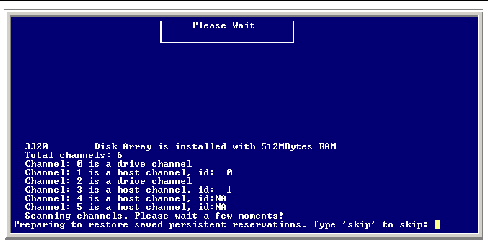
FIGURE 4-30 Host Terminal Window
Figure showing the host terminal window displaying a series of messages.Do not use the skip option shown at the bottom of the example. This option is reserved for support personnel performing testing.
You might need to power off the array (both power supplies) if you relocate the array or perform certain maintenance procedures with associated servers. Always shut down the array’s controller before powering off the array.
To power off an array, perform the following steps:
1. Stop all I/O activity to the array.
2. Shut down the controller with one of the following commands:
These commands first halt all I/O activity, and then write the contents of cache to the drives.
3. Power off both power supply/fan modules.
See Section 4.14, Power-On Sequence for information about turning the array on again.
Copyright © 2009 Sun Microsystems, Inc. All rights reserved.